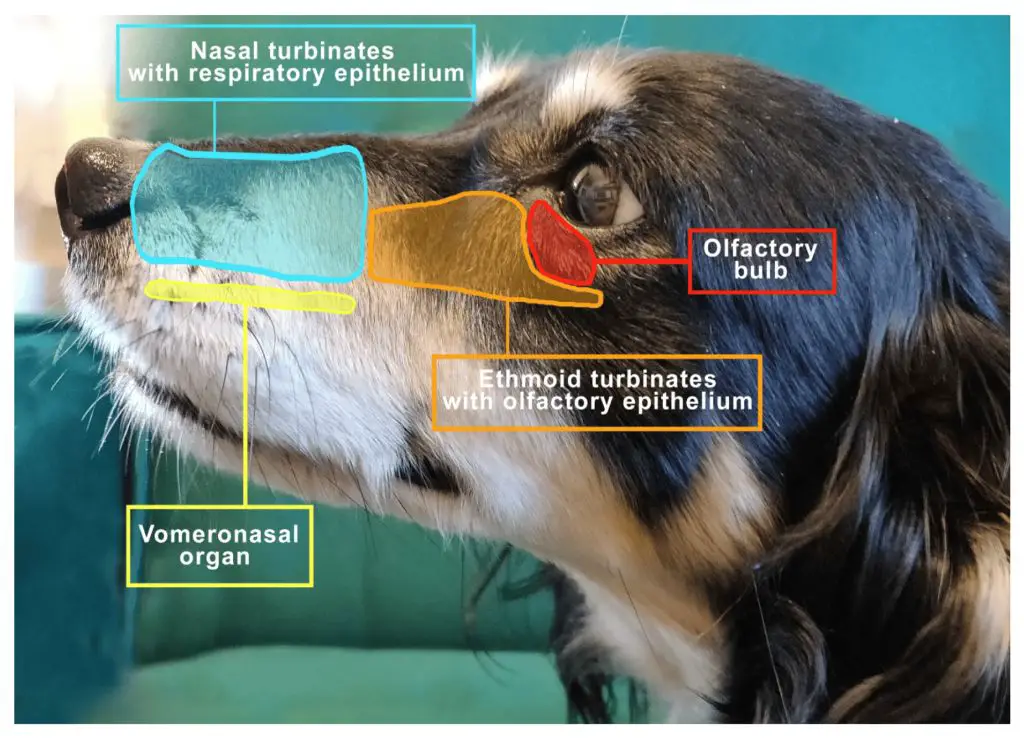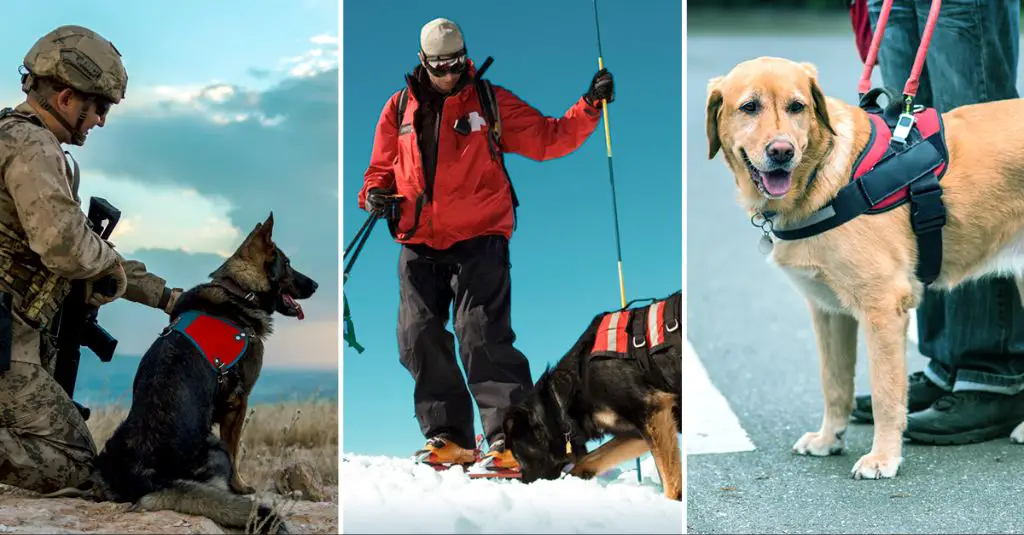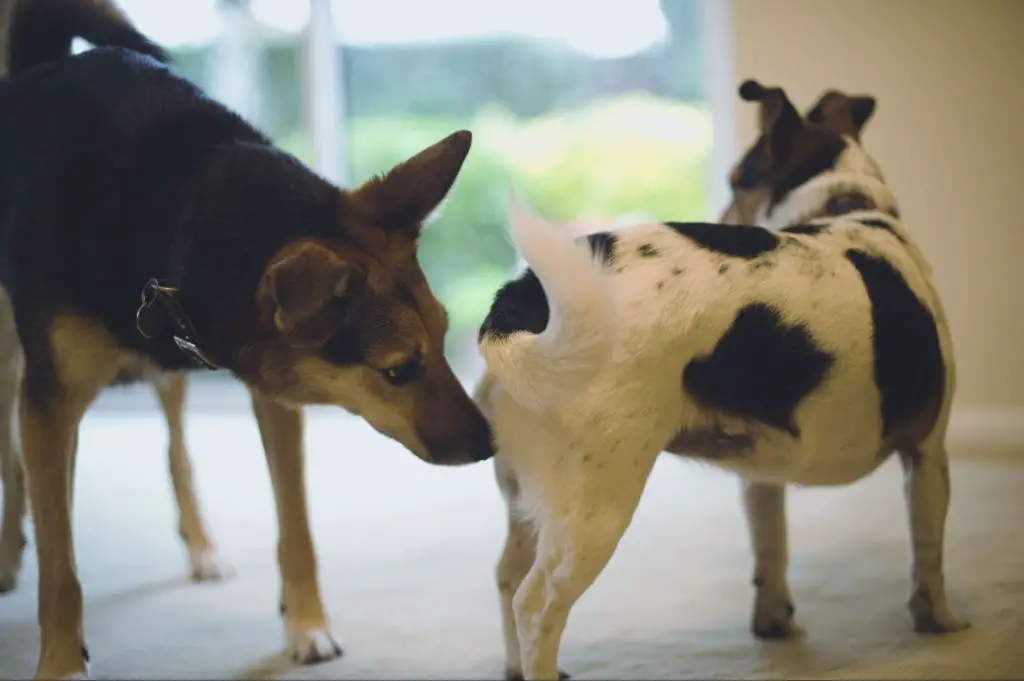Introduction
A dog’s sense of smell is truly remarkable. This article will explore the canine olfactory system and abilities in depth. We’ll look at everything from the anatomy that gives dogs such an astounding sense of smell, to how scent detection is utilized in working dogs, to fun facts about sniffing. Whether you’re a dog owner interested in your pup’s superpower sniffer or simply love learning about our canine companions, you’ll gain fascinating insights into dogs’ extraordinary noses.
Anatomy
Dogs have an incredibly complex nose and scenting system that allows them to detect odors at trace levels. Their elongated snout has over 230 million olfactory receptors compared to only 6 million in humans. The part of a dog’s brain devoted to analyzing scents is about 40 times larger than in people. Dogs also have a special organ inside their nose called the vomeronasal organ that helps detect pheromones and other chemical signals. Their large, wet noses help absorb scent molecules and trap them near the olfactory epithelium. They can even move their nostrils independently to determine the direction of an odor. Additionally, dogs can breathe in and out at the same time, pulling in new air with each breath. This “stereo” breathing allows for continuous scent sampling and perception. Dogs also have a moist thin tissue called a flehmen lining in the roof of their mouth that collects scents for analysis.

Sense of Smell vs Humans
A dog’s sense of smell is vastly superior to a human’s. Dogs have up to 300 million olfactory receptors in their noses, compared to only about 6 million in humans. This means dogs can detect scents at concentrations of 1-2 parts per trillion, whereas humans need concentrations around 1 part per million to identify a smell.
To illustrate the difference, if you take two cups of water and add one teaspoon of sugar to one cup, dogs can distinguish between the two while humans cannot tell the difference. Dogs can also follow scent trails up to 90 feet underground and trace scents across long distances or after hours have passed. Their powerful noses allow dogs to detect things humans would never notice, like minute chemical changes signaling disease, hidden explosives or drugs, or even distinguishing identical twins based on scent alone.
Because of their incredible smelling capabilities, dogs are able to track missing persons, detect bombs or contraband, find avalanche victims, monitor diseases, identify hazardous materials, and much more – feats far beyond any human’s olfactory senses.
Detection Abilities
A dog’s sense of smell is absolutely incredible. Dogs can detect scents from distances that seem unbelievable to us humans. Some dogs are able to pick up scents from over a mile away! Dogs can also follow scent trails left by an animal or person, even if the trail is days or weeks old. Their powerful noses allow dogs to follow these trails for long distances often over very difficult terrain.
Not only can dogs detect scents from far away, but they can also discern individual scents even when there are many scents mixed together. For example, when searching a house, a dog can pick out the unique scent of a specific person amidst all the other scents present. Their ability to identify specific scents among many different ones is truly remarkable.
A dog’s powerful sense of smell comes from the number of olfactory receptors they have in their noses along with the intricate structure of their nasal chamber that disperses scents efficiently. The percentage of a dog’s brain dedicated to analyzing smells is far greater than that of humans as well. Their anatomy and brain structure allows dogs to detect and process scents at levels we can barely imagine.
Used in Work

Dogs’ incredible sense of smell is widely utilized in working roles. Their ability to detect odors unnoticed by humans makes them invaluable for sniffing out contraband and locating missing persons. Some of the major working roles for dogs that capitalize on their sense of smell include:
Explosives detection – Dogs can sniff out explosive materials and devices in airports, trains, government buildings and more. Their nose can pick up trace amounts of chemicals used in explosives that no machine can detect.
Drug detection – Police dogs are experts at sniffing out illegal drugs like cocaine, heroin and marijuana in homes, vehicles and packages. Drug dogs help find large stashes during raids and small amounts on smugglers or users.
Search and rescue – SAR dogs use their nose to locate missing persons in disasters. They can pick up human scent from great distances and pinpoint an individual person’s scent trail. This aids in wilderness, avalanche and disaster rescues.
Disease detection – Medical detection dogs are being trained to sniff out diseases like cancer, malaria, Parkinson’s and more by smelling biochemical changes. They can quickly and non-invasively screen for diseases.
Mental Stimulation
A dog’s sense of smell provides important mental stimulation and enrichment for them. Dogs experience the world primarily through their noses, so sniffing and smelling provides critical sensory input and brain exercise.
Sniffing engages a dog’s mind by allowing them to gather information about their surroundings. As they pick up scents, their brain works to identify all the different smells and make sense of them. This provides mental stimulation similar to doing a puzzle or game. The more new and intriguing smells, the more their mind gets a workout.
Smelling also enables dogs to engage in natural scavenger behaviors. Seeking out scents gives them an outlet for their foraging instincts, allowing them to “hunt” for smells the way their wild ancestors would hunt for food. Satisfying these innate desires provides dogs with mental enrichment.
Additionally, smells bring excitement and joy to dogs through all the information and memories triggered. Catching an appealing scent can provide the same level of pleasure as playing a fun game. Providing smell opportunities is important to keep their minds engaged and happy.
Health
A dog’s sense of smell plays an important role in its health and wellbeing. Loss of smell, also known as anosmia, can have detrimental effects.

When a dog loses its sense of smell, even partially, its appetite is frequently reduced. Since the taste and the smell of food are interconnected, a reduction in olfactory ability leads to a decrease in appetite and food enjoyment. This can result in weight loss, malnutrition, and other health issues.
Anxiety and stress levels may also rise when a dog loses its ability to smell. Scents provide dogs with key information about their environment and losing that input can be disorienting. Increased anxiety from anosmia may lead to behavioral issues like destructiveness.
On the neurological side, the olfactory bulb in the brain is closely tied to memory, emotions, and cognition. Diminished stimulation from a poor sense of smell is linked to cognitive decline. Sniffing and olfaction are important mental exercises for dogs to help keep their brains healthy.
Overall, smell is a vital component of a dog’s health. Loss of smell should be addressed quickly, as it can negatively impact appetite, anxiety, and brain health.
Breed Differences
All dogs have an incredible sense of smell compared to humans, but some breeds stand out as scenting superstars. Here’s how breeds compare when it comes to sniffing abilities:
Bloodhounds – Often called the nose with a dog attached! Bloodhounds have around 300 million scent receptors, compared to a human’s 5 million. Their tracking abilities are legendary.
Basset Hounds – With their droopy ears sweeping scents towards that impressive sniffer, Basset Hounds are hard to beat. Their long body and short legs are purpose-built for following scents on the ground.
Beagles – A top choice for contraband detection. Beagles have 125-220 million scent receptors and excelled at tracking rabbits historically. They are determined when on a scent.
German Shepherds – With around 225 million scent receptors, German Shepherds make great police dogs. Their upright ears funnel odors down towards their nose.
Labrador Retrievers – Excellent bird dogs in the field, Labrador Retrievers have a keen nose with around 220 million scent receptors. They are focused and methodical sniffers.
While all dogs have a better sense of smell than us, these breeds stand out. Tracking, detection work, and following scents are their forte. But for simply enjoying all the olfactory wonders in the world around them, any pup’s nose knows!
Fun Facts

Dogs have some amazing abilities when it comes to their sense of smell. Here are some fun facts about what dogs can detect and how they use their powerful noses:
Dogs can smell in stereo – They have nostrils that can work independently, allowing them to understand direction and space of an odor. This helps them track down exactly where a smell is coming from.
Dogs can smell underground – Using their noses, dogs can detect gas leaks in pipelines up to 15 feet underground.
Dogs can smell emotions – Studies show dogs may be able to smell the chemical changes that occur in our bodies due to different emotional states.
Dogs can smell disease – Dogs have been trained to detect certain cancers, alert diabetic owners to low blood sugar, and even sniff out malaria in samples.
Dogs use smell to gather information – When dogs greet each other, they gather details like identity, sex, and health status through smelling. Their nose print is as unique as a human fingerprint.
Some dogs jobs depend on smell – From bomb and drug sniffing dogs, to dogs who sniff out contraband food items, search and rescue dogs, and more – dogs use their sense of smell to help humans in many working roles.
Scent marking is a form of communication – When dogs urinate on vertical items like trees, lampposts, and furniture, they are scent marking to communicate with other dogs.
Conclusion
In conclusion, a dog’s sense of smell is truly remarkable compared to humans. Dogs have up to 300 million olfactory receptors in their noses, while humans only have about 6 million. This means dogs can detect scents at concentrations nearly 100 million times lower than humans can. Their powerful sniffers allow dogs to follow trails, identify people, detect drugs or explosives, and even sniff out cancer. A dog’s nose is a complex organ, and the act of sniffing engages many parts of a dog’s brain and provides mental stimulation. While all dogs have excellent smell compared to humans, some breeds like Bloodhounds stand out as super-sniffers. Whatever their breed, dogs put their exceptional sense of smell to work every day in ways that benefit humans. After learning about dogs’ sniffing abilities, it’s clear that their sense of smell is one of the many things that makes dogs unique and amazing companions.